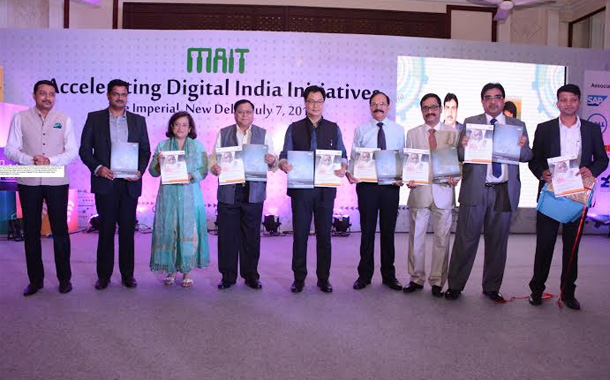MAIT’s think tank, DIAG’s White Paper reveals prediction and early warning systems with help of IoT can effectively mitigate disasters on real-time basis
The Digital India Action Group (DIAG), a think tank established for ideating and monitoring policy initiatives to support the Indian Government’s mission of Digital India, set up by Manufacturers’ Association of Information Technology (MAIT) announced the unveiling of a white paper on “IoT for Effective Disaster Management”. The white paper aims to create awareness and appreciation about the potential use and application of IoT for different aspects of disaster management.
Launching the white paper, Kiren Rijiju, Minister of State for Home Affairs, Govt. of India said, “Information technology has played a key role in changing the face of our country and noteworthy initiatives like Digital India are encouraging us to push the boundaries of innovation. I am happy that industry bodies such as MAIT have taken the lead in helping the government devise proactive policies and plans, and suggest ways to most effectively deploy Information and Communication Technologies to mitigate the effects of disasters.”
According to the press release, the white paper recommends a ‘Seven-Point Action Plan’ to shift from a ‘relief and recovery’ model to ‘risk and vulnerability assessment’ and address key issues and challenges related to management of natural and man-made disasters in India. In this hyper-connected era, IoT plays an important role by interconnecting intelligent devices for the purpose of sharing information. It also provides early warnings through sensor based technologies, thereby creating innovative and effective systems for disaster management.
The white paper also highlights the importance of real-time information management for effective preparation, planning, response and mitigation of disasters. It places emphasis on the IoT as a technology domain, which can pave the way for a radical and pioneering approach to minimize losses caused due to disasters. Leading technology giant SAP India collaborated with MAIT along with other players from the DIAG in order to create the white paper.
According to Debjani Ghosh, President, MAIT, “There is a realization that as a country we need to build a culture of disaster preparedness at all levels. The white paper sheds light on the need to build capacity at the central, state and district levels, empower and train volunteers while ensuring focus on vulnerable groups. It also reveals that learning from past disasters and knowledge sharing is an important goal that can be fulfilled by effective deployment of ICT solutions.”
Deb Deep Sengupta, President and Managing Director, SAP Indian Subcontinent said, “The opportunities for application of technologies in disaster management are significant. One such revolution is IoT, which will help to not only respond but also predict and help react on a real-time basis. These predictions and correlations will be transformational. We are happy to have contributed to this initiative which is the first step towards managing future calamities and making lives better.”
The white paper was unveiled by Hon’ble Minister of State for Home Affairs, Govt. of India, Kiren Rijiju; Debjani Ghosh, President, MAIT and Deb Deep Sengupta, President & MD, SAP Indian Subcontinent. Also present on the occasion were senior Government of India officers Dr. V K Saraswat, Member, NITI Aayog; R K Jain, Member Secretary, NDMA and leadership team members from Accenture.
The National Disaster Management Act was passed in December 2005 and envisaged the following organizational set-up, headed by the Prime Minister of India:
NDMA – Headed by the Prime Minister
SDMAs – Headed by the respective Chief Ministers
DDMAs – Headed by DM/DC, co-chaired by Chairperson, Zila Parishad
Nodal Ministry – Ministry of Home Affairs (MHA), Government of India
National Emergency Response Centre (NEOC) – Based in MHA, functions 24 x 7
National Disaster Response Force (NDRF) – Specialized force, works under the control of NDMA
National Institute of Disaster Management (NIDM) – Designs, develops and implements training programs, undertakes research, HRD, assistance in national policy formulation, develop educational material promote awareness
Civil Defense and Home Guards – Help in community preparedness and public awareness.


